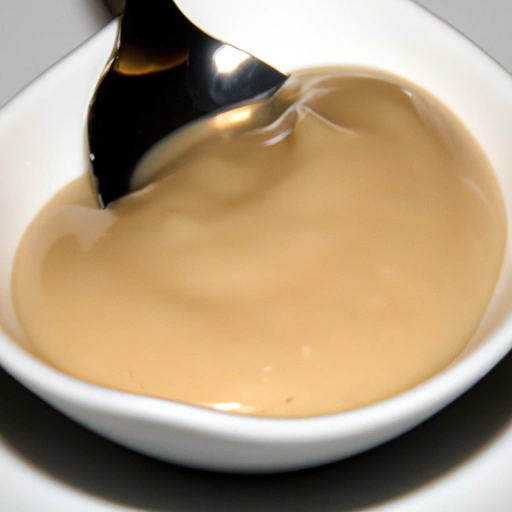Gravy
Description

Gravy is a savory sauce made by thickening meat drippings and broth with flour, cornstarch, or other thickeners, and is often enriched with ingredients such as cream, wine, herbs, and spices. It is commonly used to moisten and flavor meats, potatoes, and other foods. In recipes, the amount of gravy is typically measured in cups (US) or milliliters (European), with tablespoons (US) or grams (European) used for the thickening agents.
Common uses
Gravy is used primarily as a sauce over meat dishes, including roasted poultry, beef, pork, and lamb. It is also popularly served with mashed potatoes, rice, and biscuits. In addition to being a key element in comfort food meals, gravy plays an essential role in festive dinners, such as Thanksgiving and Christmas.
Nutritional value
Calories
The caloric content of gravy can vary widely depending on the ingredients and preparation method, but generally, a quarter-cup serving (about 59 milliliters) of homemade gravy may contain approximately 25-100 calories.
Protein
Homemade gravy may contain about 1-2 grams of protein per quarter-cup serving, largely derived from the meat juices used in its base.
Fat
The fat content in a quarter-cup serving of gravy can range from 1-10 grams, influenced by the choice of thickening agent and the inclusion of meat drippings or butter.
Carbohydrates
Gravy typically contains about 2-8 grams of carbohydrates per quarter-cup serving, which comes from the flour or cornstarch used as a thickener.
Vitamins
Gravy may offer small amounts of vitamins, particularly those that are fat-soluble and present in the meat drippings, such as vitamins A, D, E, and K.
Minerals
Minerals such as selenium, zinc, and iron can be found in gravy, contributed by the meat juices that form its base.
Health benefits
When consumed in moderation, gravy can provide some nutritional benefits, including essential vitamins and minerals from the meat base. It can also be a source of quick energy due to its fat and carbohydrate content.
Potential risks
High in calories and fats, particularly saturated fats, gravy should be consumed in moderation to avoid contributing to an increased risk of heart disease and weight gain. It can also be high in sodium, which may be a concern for those with hypertension.
Common recipes
Gravy is featured in recipes such as roast dinners, poutine, open-faced sandwiches, and the classic Southern dish biscuits and gravy. It is also a key ingredient in gravies specific to regional cuisines, like sausage gravy in the American South and onion gravy in England.
Cooking methods
Gravy is usually made by simmering meat drippings and broth, then thickening the mixture with a roux (butter and flour) or a slurry (cornstarch and water). It is often seasoned with salt, pepper, and other spices or herbs.
Pairing with other ingredients
This versatile sauce pairs well with hearty meats and starches, such as mashed potatoes, rice, or noodles. It also complements steamed vegetables by adding richness and depth of flavor.
Summary
Gravy is a classic and versatile sauce that spans cultures and cuisines, adding flavor and moisture to a wide variety of dishes. From its historic European origins to its place in American culinary traditions, gravy has stood the test of time as a beloved accompaniment to meals both humble and grand. While it holds some nutritional value, it's best enjoyed in moderation due to its potential risks when overconsumed. Gravy's ability to enhance and transform dishes ensures its enduring popularity in kitchens around the world.